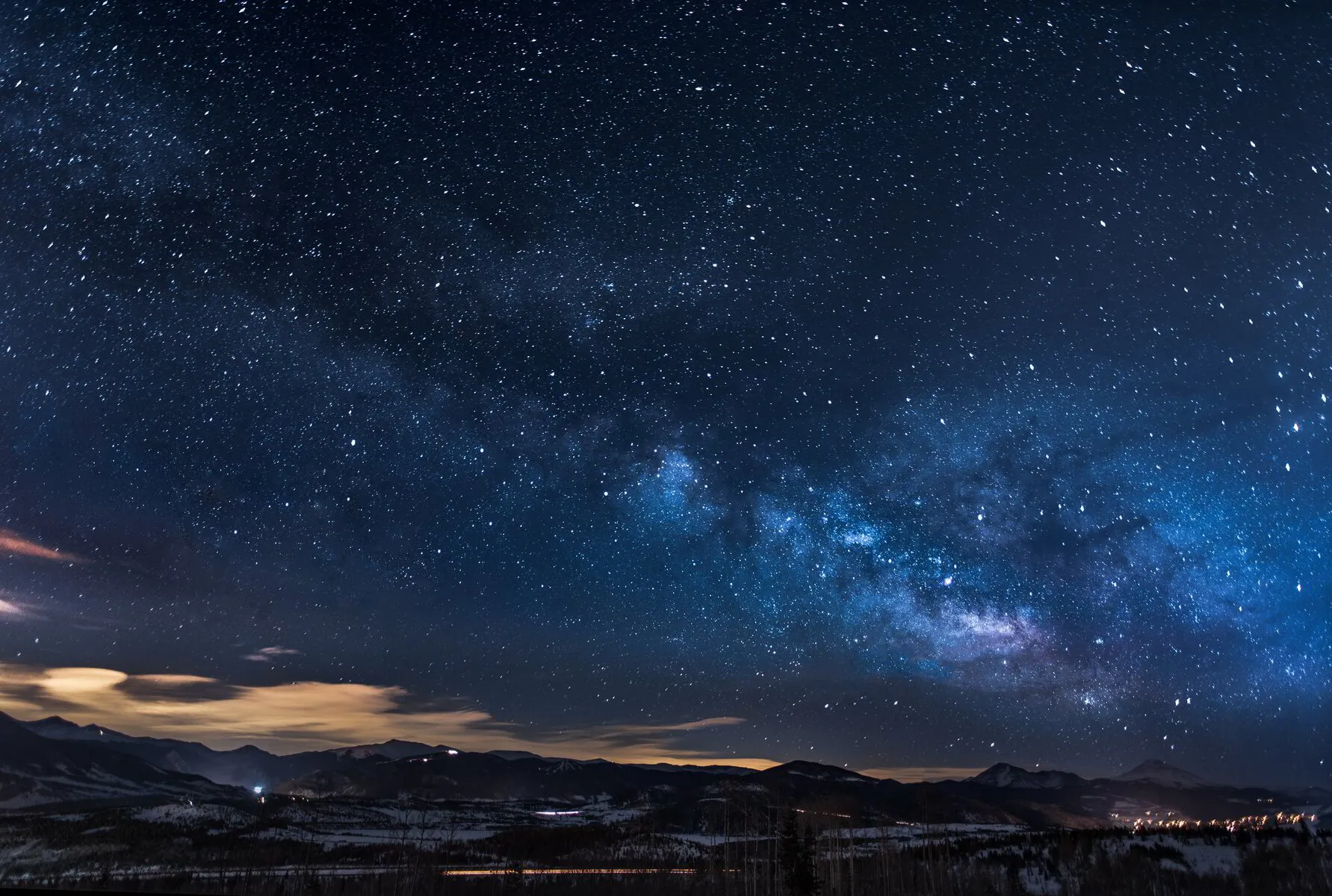Kelly Grossette The red line marks the path Taos Search and Rescue took to find and help a hiker who was stranded in a chute outbounds near Taos Ski Valley. Courtesy photo/Kelly Grossette. Posted Taos News, Thursday, April 4, 2019 5:00 pm By Robin Martin – [email protected]
Avalanche chutes. Slopes exceeding a 45-degree pitch. A moonless night. Temperatures dropping to zero. Nevertheless, a high-altitude search and rescue operation in the Wheeler Peak Wilderness last week brought a 36-year-old Miami woman to safety.
About 11:30 a.m., Thursday, (March 28), a 911 dispatcher received a call from a hiker who had become lost while trying to reach Wheeler Peak. According to her rescue team, the woman had started about 7:20 a.m. from the Williams Lake parking lot above the village of Taos Ski Valley. Part way up the trail, she took a left instead of a right turn where Summit Trail meets the ridge.
When she realized her mistake, the rescuers said, she decided to head directly downhill. She mistook the above-timberline mountainside for a ski run and dropped into Peace Sign Chute. Because the snow was starting to thaw, it became unstable when she stepped on it. After sliding down the slope, she finally reached a tree, where she hung on, the rescuers said.
Taos Search and Rescue (TSAR) team member Kelly Grossetete received a call about the situation at 3:30 p.m., as she was returning from skiing.
She and her family own the St. Moritz Condominiums on Twining Road, and she is resident manager. She spent her early childhood in Taos Ski Valley, later working as a ski patroller at Alta in Utah, as a white-water river guide and as a professional airplane pilot.
A rescue begins
Grossetete collected her pack, which had a first-aid kit, emergency overnight gear, extra warm clothes, water, an avalanche shovel, beacon and probe, hand warmers and snacks. She took skins and crampons for her skis, then met two other TSAR members and a state police officer at the Williams Lake parking lot. TSAR volunteers Roy Dunlap and Gary Jones had snowshoes with them as they went up the Williams Lake trail.
The team was able to triangulate the hiker’s location from cellphone pings, realizing she was in an avalanche chute between Wheeler Peak and Mount Walter. They called and used horns but couldn’t hear a reply. The three stopped where the Williams Lake trail intersects a track used by skiers who use skins to climb and ski the chutes. The other team members continued on several hundred feet but were not able to go farther on their snowshoes, stopping near the bottom of the chute where they remained in radio contact with Grossetete, who continued on alone.
They had made an informed decision to split up. Grossetete had better equipment for reaching the hiker. Given the avalanche danger, it was safer for only one rescuer to cross the steep slopes.
She climbed up through the trees on her skins, following the trail backcountry skiers use. At tree line, she traversed higher, and arrived at the top of the chutes where skiers descend on their powder runs.
A helicopter, in contact with Taos Ski Valley patroller Leland Thompson, flew by. The pilot spotted Grossetete, but decided it was too windy and the slopes too steep to land.
Grossetete yelled out to the hiker and heard a faint response. She crossed the first chute, Pinkie Chute, on her skis, spending as little time as possible in the traverse because of the avalanche danger. She passed through the relative safety of trees and rocks on the far side of the chute, then quickly crossed Ring Finger Chute. Again, safety in the trees and rocks, and she was at the edge of Peace Sign Chute, in voice contact with the hiker.
The sun had set and as the temperature dropped, the snow became more stable. The chute seemed to have avalanched several days before, and Grossetete traveled below the crown, where top layers of snow had already slid away.
In the fading light, she couldn’t see the hiker until the woman moved. Grossetete took off her skis. The snow was mid-thigh deep. She “postholed” down the right flank of the chute, using her skis as support.
When she reached her, Grossetete was relieved to find that the woman was in “great shape.” She was wearing a warm jacket, hiking pants and non-waterproof hiking boots. She was sitting on a small blanket, alert, oriented and shivering. Shivering is a good sign to rescuers because it means a person is not hypothermic. “She was scared and thought she was going to die there,” Grossetete said.
A treacherous descent
They were at an elevation near 11,800 feet. It was almost dark. The temperature had dropped to about 20 degrees Fahrenheit. The slope was near 50 degrees.
Grossetete made a platform in the snow on the side of the chute, where she could unload her pack. She gave the hiker warm clothes, hand warmers, water with electrolytes and checked her hands and feet, which were still warm.
TSV patroller Thompson and TSAR member Chris Kodey had started up the mountain to assist Grossetete. More than 1,000 feet below, the rest of the TSAR group had been joined by four other rescue teams from as far away as Santa Fe.
The two women started down the chute. Since it had already avalanched, Grossetete thought it would be safest to go straight down.
She said it was a clear, pitch-dark night, and “the stars were magnificent.” They went down backwards, like descending a ladder.
Grossetete kicked toeholds in the snow with her ski boots and guided the hiker’s foot into each one with her hand, saying “right foot, left foot” over and over. “There was no chatter,” Grossetete said. She didn’t want the woman to lose her concentration. Some steps were long, some short, on the uneven slope. They each used a ski, binding side down, to stabilize themselves.
Grossetete knew the consequences of a fall. There would have been no chance for self-arrest on the frozen snow.
Help on the way
The hiker had a headlamp that ran out of battery after about an hour. Grossetete clipped her 1,000 lumen light to the bottom of her radio harness, so it would illuminate her feet. The radio, tuned to the state’s fire frequency because the search and rescue channel was faint, also had a light that shone on the snow from Grossetete’s chest.
Below, the other rescuers kept a light trained on Grossetete’s pack, monitoring the descent. After several hours, Kodey, and later Thompson, reached the pair, one on snowshoes, one on touring skis. They brought more light and checked the hiker’s health. They all continued down to where days ago the avalanche had stopped, leaving a pile of rubble.
Grossetete was sinking into the snow above mid-thigh. The two women turned on their backs and proceeded down like crabs.
As they reached the bottom end of the debris pile, the snow became smoother, and Thompson gave the hiker snowshoes. Grossetete continued walking, as her ski binding had frozen.
After they reached the other rescuers, TSV Search and Rescue member Christof Brownell carried a grateful Grossetete’s skis and pack to the parking lot, where after a debriefing, and plenty of hugs and thanks for Grossetete, everyone dispersed. The mission was over by 3 a.m. The temperature was zero degrees Fahrenheit.
Grossetete said she “thanked the Lord for His presence.” She had been scared, but “it was like a good scared. It kept you on your toes, to make good decisions.”
The hiker was taken in a state police car to her motel room in Taos. Grossetete drove to her condominium where she took a hot shower, turned on a heating pad and tried in vain to sleep: “Thinking about what if this, what if that … I don’t know if anybody sleeps after something like that.”
She said her “quads were super sore the next day.” But this week she is back to normal, after soaking in the hot springs at Ojo Caliente and “eating everything in sight.”
Grossetete is grateful that the story had a happy ending. A rescue is a group effort, she said, between all team members. (TSAR does not disclose names of those they help without their permission.)
Disclosure: Robin Martin is a cousin of Kelly Grossetete.

